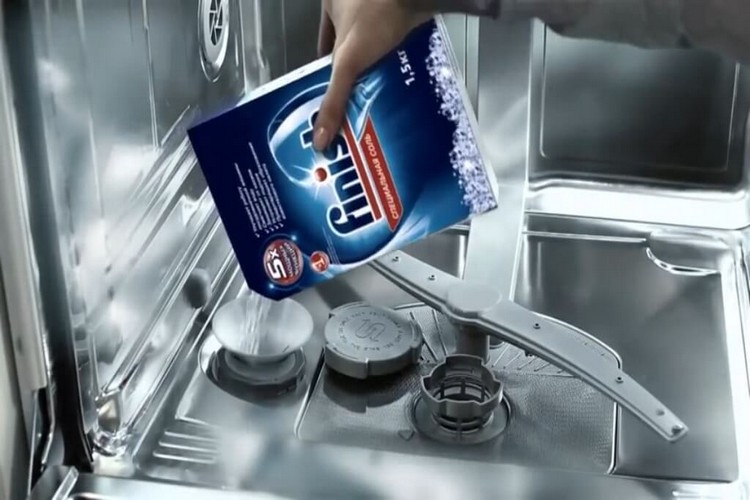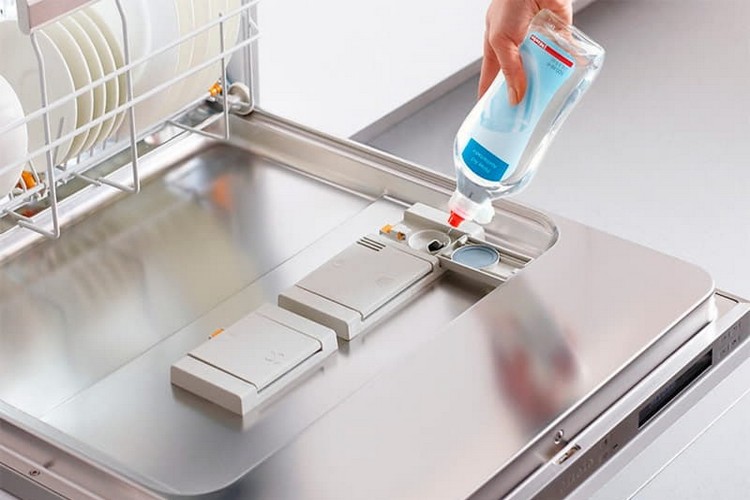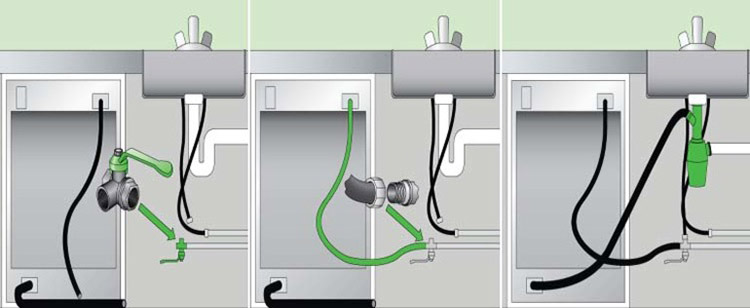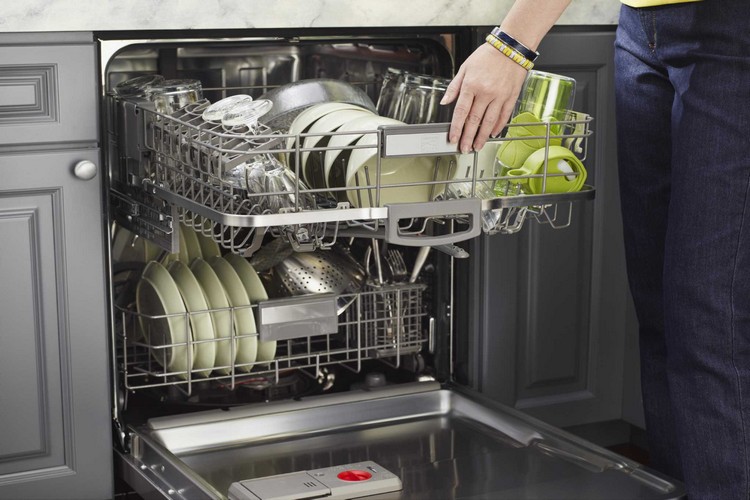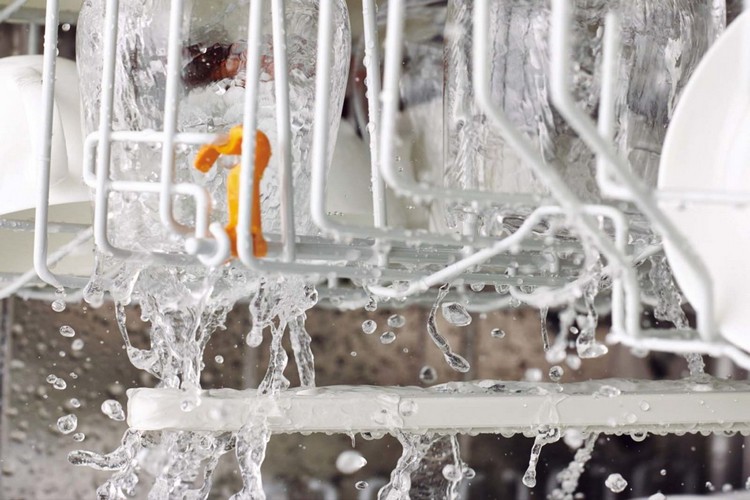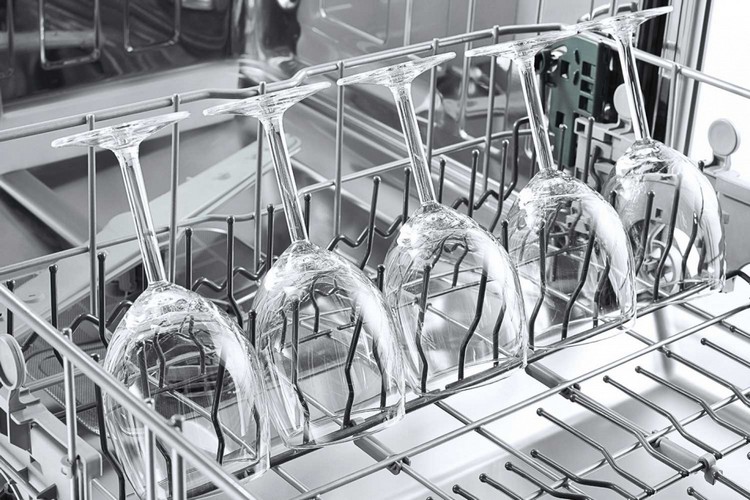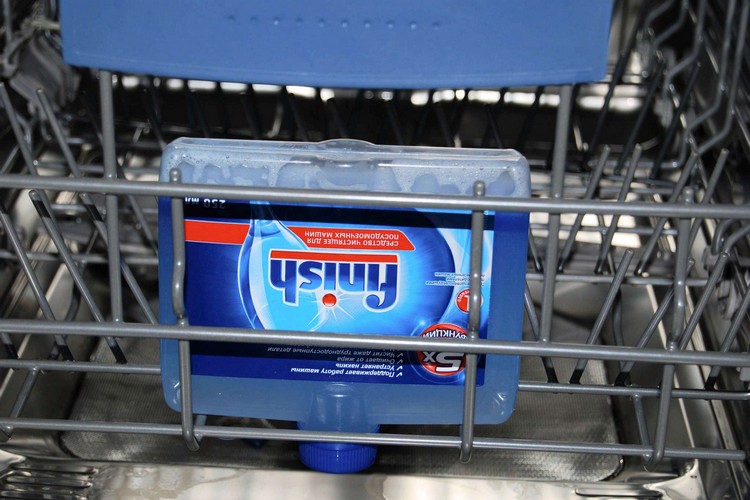Guide: how to use the dishwasher - rules for loading, turning on and using the dishwasher
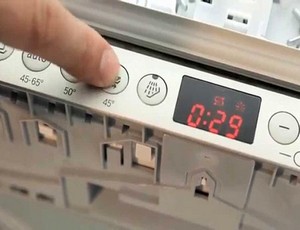 When a dishwasher is bought for the first time, happy owners have a lot of questions about how to use it correctly.
When a dishwasher is bought for the first time, happy owners have a lot of questions about how to use it correctly.
But experience shows that even for those who have been using this household appliance for a long time, sometimes nuances emerge that require more detailed study.
This article will tell you how to prepare the dishwasher, how to care for it, how to load dishes into it and the various nuances of servicing these household appliances.
Content
How often should you wash the dishes
You can wash dishes in the dishwasher once every two days. The machine consumes about 11 liters of water for this, which is significantly less than when washing by hand. Subsequently, getting rid of the need to wash your hands favorably affects the condition of the skin and nails of the hands: the skin stops peeling off, and the nails no longer exfoliate.
Preparing the machine for work
Before using the dishwasher, you need to prepare it - select the means for it and connect it to communications. But first things first.
Salt
When preparing the dishwasher for work, it is important to pay attention to such an issue as chemistry.
The fact is that the number of fakes on the market for dishwasher chemicals is simply huge, and the purchasing power is quite low.Many people are not able to buy the same tablets or capsules for 2000-2500 rubles per package, not to mention powders, salts, gels from expensive manufacturers. Therefore, buyers very often choose more budget solutions and buy well-known brands of chemicals somewhere at a discount.
If we talk about salt, people often complain that plaque, sand, traces appear on the dishes, and salt is to blame.
Real edible salt is extra salt, with a purity of 99%, it contains 1 percent of insoluble impurities, in fact, ordinary stone and sand. Therefore, ordinary salt cannot be poured into the dishwasher; in 5-12 months it renders the ion exchanger unusable.
If you buy real, correct salt, then this salt has two features: firstly, its purity is 99.98%, it is much cleaner than the purest food salt in the world, and there are much fewer impurities, and secondly, this salt dissolves quickly.
Even if it has some tiny crystals that can scratch something, it dissolves literally instantly.
If you buy fake salt, no matter what brand, then be prepared for the fact that it will kill your ion exchanger. If low-quality salt gets into your salt container, then the water washing it out from there will not have time to dissolve it. As a result, after a very short period of time, the ion exchanger will be torn to pieces and killed.
Therefore, while the dishwasher is in good condition, in no case should you buy salt in various strange stores, buy only in chain stores and never buy cheap, strange salt.
rinse aid
Many people believe that you can buy any conditioner and nothing depends on it, but here everything is much more complicated.
The fact is that the rinse aid is the last to react, in contact with the dishes. This means that the quality of your life and nutrition depends on its safety. Because if the rinse aid does not completely leave with the water and leaves some kind of film on the dishes, then this film will get into your stomach later when you eat food.
Therefore, it is better to get wet dishes without rinse aid than to buy cheap rinse aid and be glad that you managed to save money. The main feature of cheap rinse aid is that it does not dry the dishes. After drying, drops of water remain on the dishes, which means that either the dosage is incorrect, or something is wrong with the rinse aid, it is better to get rid of it.
Connecting the dishwasher to hot water
The fact is that in the European market, especially in southern Europe, virtually every dishwasher has the ability to connect to warm water. Do not confuse it with hot, hot water is not available anywhere in the world, except in the countries of the former USSR, in the rest of the world cold water is supplied to houses and the owner of the apartment already heats it.
In the south of Europe, where there are 250-300 sunny days a year, from time immemorial, the same black tanks were placed on the roofs of houses, as in our summer cottages, and now they are installing solar panels, or something else that allows you to heat this water for free .
And in this case, people, instead of connecting the dishwasher to electricity and spending a large amount of electricity to heat water, heat water in their homes virtually for free. The only condition is that the water temperature should not exceed 55-60 degrees, because the machine is not designed for high temperatures.
In our country, most people use not solar stations, but water heaters. If you have an electric water heater, then you will not achieve much savings, you can only take a risk if you can clearly control the temperature in the region of 55-60 degrees.
The recommendation of the masters is that if you use the heating element not of a dishwasher, but of an external water heater, then the repair will be much cheaper.
If you connect the dishwasher to warm water of 55-60 degrees, then the load on the heating element becomes much less. This applies to all dishwashers, regardless of manufacturer, with the exception of premium segment machines. When connected to warm water, drying does not occur at all.
If drying does not bother you, if your machine is without a heat exchanger, then connect it to warm water quite calmly, this will really extend its life.
Preparing dishes for washing in PMM
According to the instructions, before you put the dishes in the dishwasher, you need to remove the remnants of food from it. Many people do not like this, but in fact there is no problem with this, especially since even if you wash the dishes by hand, you still need to remove the leftover food before putting it in the sink.
If you load the dishes directly with leftovers, the food will fly inside during the entire washing cycle and even remain on the dishes.
How to put the dishes in the PMM
There are several options for how to use the dishwasher.
If you accumulate dirty dishes in the sink, and load them into the car in the evening before washing, then you get a more rational arrangement and there is no smell from dirty dishes in the dishwasher.
And if you immediately put the dishes in the dishwasher after eating, you will be pleased with a clean kitchen and sink. But you will have to fold it more compactly, close the machine tightly before turning on the sink, otherwise every time you open it to put a new batch of dishes during the day, you will feel an unpleasant smell.
Spoons and forks can be washed on the top tier or in the basket. Washing in the basket is much faster. To save time, you can fold down the dividers at the basket and insert spoons and forks directly into the bundle. This is much faster than inserting each spoon one at a time into the separator, and they are washed in the same way. In the basket, you can also wash any other small things - lids, or some small parts of dishes.
On the lower tier you can put large plates, pots, pans. If there are any ladles, ladles - they can be folded to the side of the plates, they will be perfectly washed there.
The most important rule is that everything with recesses must be placed upside down, because water splashes from below, but flows down the walls from above onto the dishes, and if you put something upside down, then in this case, when you open the dishwasher, you will see full plates water.
After everything has already been arranged, if the dishwasher is packed tightly, you need to check if the dishes are interfering with the sprinkler.
How to choose a washing mode
Any dishwasher, both built-in and desktop, has several washing modes, on average there are five, here are some of them:
Soak
This mode is useful when there are not so many dirty dishes, for example, after breakfast.
During the day, you can add dishes to the machine, this mode will simply rinse it from food debris so that there is no unpleasant smell and dried food.
Quick wash
This mode can be started if you are waiting for guests and you urgently need clean dishes, or you still do not have many dishes of medium soiling.
It lasts no more than half an hour. There will be no pre-rinse, only dishwashing at 45 degrees, intermediate rinse and final rinse. The dishes after all this will be wet, because drying is not included here either, hence the time savings.
intensive wash
There is also a pre-rinse, a wash at a temperature of 70 degrees, an intermediate rinse, a final rinse, and drying.
This mode is used mainly for heavily soiled dishes - pots, pans, coarse dishes, cutlery. You need to use this mode very carefully if you have to wash plastic products, because not all products can withstand this, they can sit down in their size and change their shape.
Delicate wash
This mode is necessary for washing fragile dishes, such as glasses. Delicate washing takes place at a temperature of 30-40 degrees, lasts 20-30 minutes.
Due to the gentle effect on the dishes, they do not appear damaged.
standard wash
This mode is characterized by a temperature of 60 degrees, a duration of 40-60 minutes, and is used for ordinary dishes with medium soiling.
half wash
In this mode, only one tray is used, in order to save water, money and electricity. As a result, it takes longer.
Extra rinse
It is used to ensure that the dishes do not smell like chemicals after washing.
What can not be washed in PMM
When buying PMM, especially such well-known brands as Bosch (Bosch), Indesit (Indesit), Hansa (Hans), Midea (Medea), Beko (Veko), Hotpoint Ariston (Hotpoint Ariston), Electrolux (Electrolux), it seems that finally - you can relax. I loaded the machine, turned it on and you can do nothing.
This is partly true, only there are things that are not recommended to be washed in it.
glass goblets
Many are faced with the fact that scratches appear on their glass goblets, and then a bright haze.
When washing dishes under the tap, nothing bad happens, but in PMM everything is a little different - the glass is in it every day for 1.5-2 hours. The most powerful jet of water, high temperature, aggressive alkali, all this leads to the fact that the water that falls on the surface of the dish is as aggressive as possible, it begins to remove calcium and magnesium from the glass.
As a result, damage appears on the glasses and it is no longer possible to fix them. PMM is not to blame, water is to blame. It is very important to set the water hardness correctly. If, for example, you have a water hardness of 4, and you set it to 5, then in this case more salt will be added, the water will soften more, which means that the water will be too softened and it will lack calcium.
To prevent this from happening, all manufacturers have special programs for washing glass.
Dishes from some types of metal
We are talking about strainers, graters, vegetable cutters and garlic makers.
In addition, under the action of detergents, a black coating may appear, which can be removed with sandpaper, but the appearance will still suffer, not to mention the fact that this coating will not only be on the dishes, but also on the inner walls of the dishwasher.
Wooden products: boards, ladles, spatulas, forks
One wash won't do anything to them. But a long stay in water saturates the wood fibers with moisture and increases the size of the product, then the object dries up and cracks and irregularities appear. And this is at best, at worst, the product will simply fall apart.
Cast iron cookware: pots, pans, pots, cauldrons
The material itself is durable, but the use of detergents in the dishwasher reduces strength and provokes rust. And after washing, the protective non-stick layer disappears.
Do not wash any other non-stick cookware in the dishwasher.
Porcelain and crystal
Like glass, this material is fragile, but glass goblets can be washed in the dishwasher, as with the right approach, they will look like new after washing.
But porcelain glasses should never be washed, they can crack, as well as lose their shade and shine.
Plastic
It all depends on the strength of the dishes, but if the walls are thin, then it may not survive the sink. In any case, you need to look at the special signs on the bottom of the dishes that allow or do not allow washing in the PMM.
Care and maintenance of PMM
There are several main parts in the PMM that require care: the first of them are the rocker arms. If you do not always use high-quality chemicals, or wash at low temperatures, then food residues that have not dissolved due to the use of inappropriate chemicals and inappropriate temperatures can enter the circulation system, and the circulation system ends in the rocker arms.
Therefore, if the dishes are not washed somewhere in the PMM, then the problem is not in the dishes, but in these nozzles. The holes they use are very small, this is done in order to increase the pressure. Therefore, the upper and lower rocker arms must be washed periodically.
It is necessary to clean the holes with sticks, forks, or blow with compressed air cylinders. After washing, they must be placed correctly, namely, upside down.
We cannot look inside the rocker, as well as inside the dishwasher itself, but notice that the machine washes somehow not so possible, so the next point is to take care of the circulation system.
If, after washing, foam remains inside, if unpleasant odors occur, the water does not drain well - all this is due to the fact that fatty contamination has appeared inside the circulation system, not necessarily only in the rocker arms. Grease occurs when using low temperatures during washing and using fake chemicals.
There are different cleaners such as Finish (Finish) and Somat (Somat), they are sold in every store. You need to turn the jar over, fix it on the protruding pins, and when the temperature inside the dishwasher reaches 65-75 degrees, in this case the wax or paraffin that is used in the lid becomes softer and releases the cleaning agent.
If there is no desire to use expensive bottles and jars, there is dry chemistry.
Most manufacturers have different powders that are sold in regular stores. It is necessary to warm up the car to a temperature of about 65 degrees, wait about 10 minutes and pour the whole pack of salt inside.
This procedure should be carried out approximately once every 3-4 months.
If you feel that the water pressure is decreasing, the dishes are not washing well, then in this case you need to use chemistry, pour cleaning powder. But we remember the main secret: you must first warm up the PMM and only then pour the powder into it. If you first pour it out there, or pour some kind of cleaning gel until the car has warmed up, all this will be like a dog’s fifth leg, wasted chemistry and time.
Useful video
How to use the dishwasher will tell in the video story:



